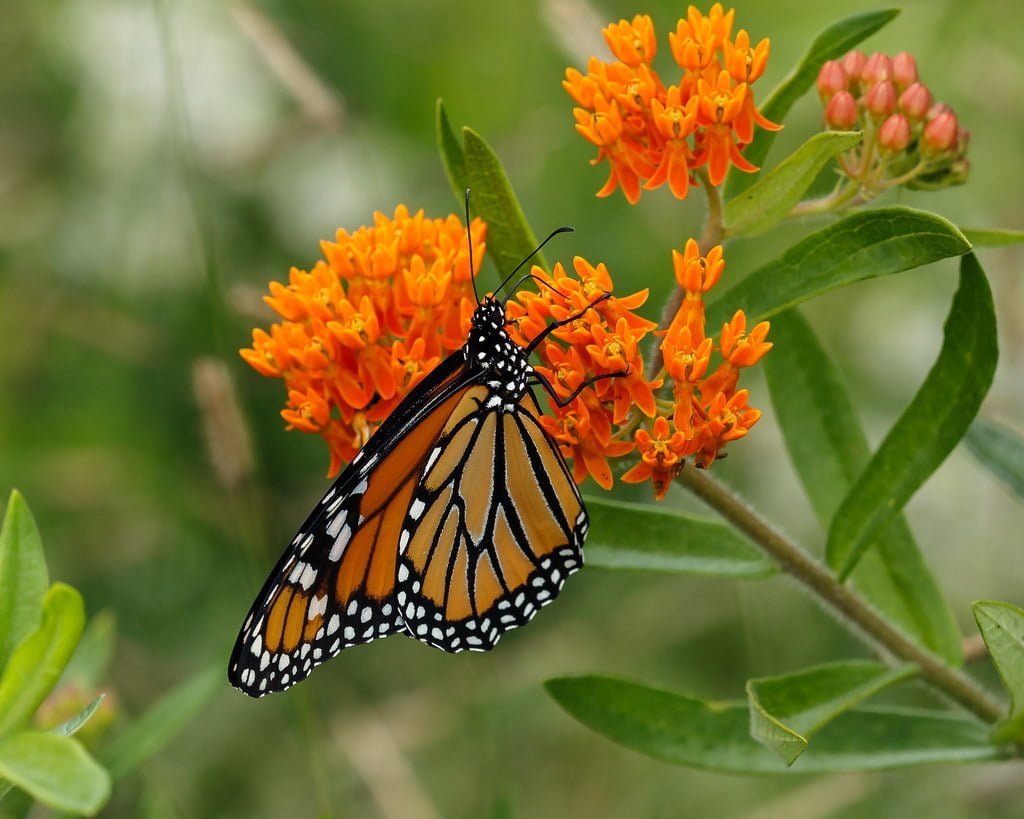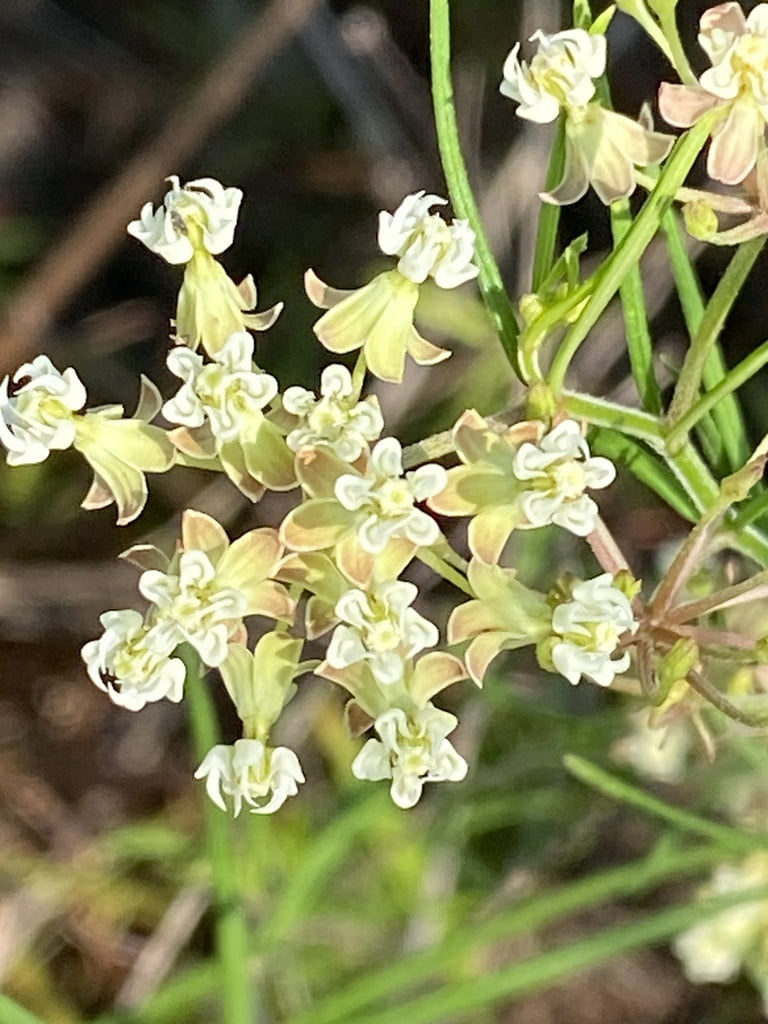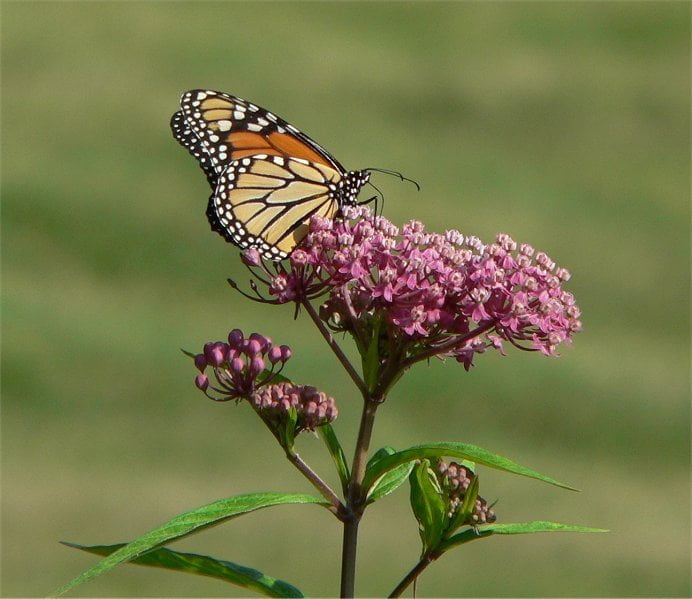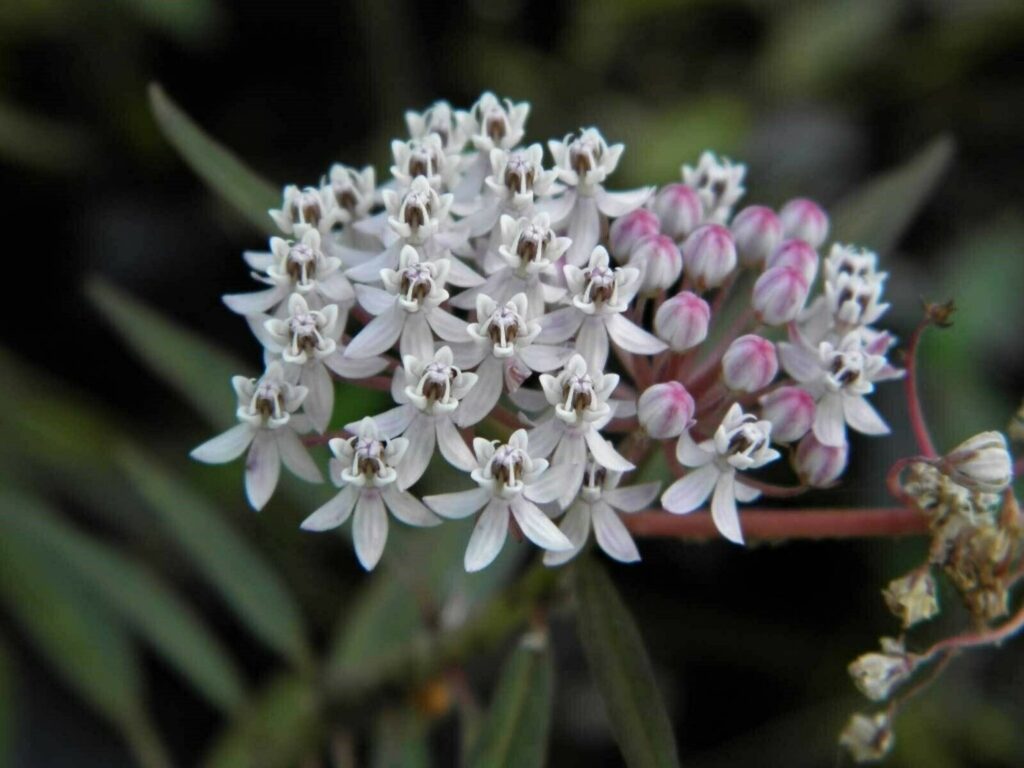A Vital Component of Monarch Butterfly Habitats and Waystations.
Whorled Milkweed (Asclepias verticillata), a member of the milkweed family, is an upright perennial plant renowned for its distinctive appearance and ecological importance. Typically reaching up to 2.5 feet in height, this plant is characterized by its simple, usually unbranched stems adorned with long, narrow, needle-like leaves. These leaves, each measuring 2 to 3 inches in length, are arranged in whorls of 3 to 6 at each node along the stems, creating a unique and easily recognizable pattern. The margins of the leaves are revolute, curling backward slightly, adding to the plant’s distinctive texture. When the stems are cut or broken, they exude a milky sap, a common trait among milkweeds.

50 Butterfly Milkweed Seeds (Asclepias Tuberosa) for North America
More than 50 Orange Butterfly Milkweed Seeds (Asclepias tuberosa) originating from tobacco country for most of North America.
Native Range and Habitat
Whorled Milkweed is native to a broad range of central and eastern North America, from Massachusetts to Ontario and Saskatchewan, and extending southward to Arizona, Northern Mexico, and Florida. In Missouri, it is widespread across the state, with the exception of the bootheel area. This hardy plant thrives in a variety of environments, including glades, dry prairies, dry slopes, dry open woods, pastures, fields, and roadsides. Its adaptability to these diverse habitats makes it an important component of many ecosystems, particularly in USDA Zones 3 through 10.
Blooming and Seed Production
Between June and September, Whorled Milkweed produces small but fragrant flowers in clusters known as umbellate cymes, each cluster containing 3 to 20 flowers. These flowers appear in the upper leaf axils and at the stem ends, creating a delicate display of greenish-white blossoms. Each tiny flower, about 1/4 inch long, features a five-lobed calyx and five greenish-white corolla lobes. The flowers also possess five white hoods, each with an incurved horn protruding from it, adding to the intricate beauty of the blooms.

Following the flowering period, Whorled Milkweed produces smooth, narrow seed pods that can grow up to 3 inches long. As the pods ripen, they split open to release numerous seeds, each equipped with silky tails (comas) that allow them to be carried away by the wind, facilitating widespread dispersal.
Ecological Importance
Whorled Milkweed is one of the many varieties of milkweed that are critical to the survival of the Monarch Butterfly (Danaus plexippus). Monarchs rely on milkweeds as the sole host plants for their larvae. The leaves of Whorled Milkweed provide essential nourishment for Monarch caterpillars, while the flowers offer nectar for adult butterflies and other pollinators. The plant’s role in the life cycle of the Monarch Butterfly underscores its importance in conservation efforts, particularly as Monarch populations face significant challenges due to habitat loss and environmental changes.

50 Swamp Milkweed Seeds (Asclepias incarnata) for North America
Create a sanctuary that celebrates. Bring the beauty of Swamp Milkweed to your garden with Johnny Butterflyseed’s Premium Swamp Milkweed Seeds.
Cultivation and Conservation
For gardeners and conservationists alike, cultivating Whorled Milkweed can contribute to the preservation of Monarch Butterfly populations. Its adaptability to a wide range of conditions makes it an excellent choice for native plant gardens, pollinator gardens, and restoration projects. By incorporating Whorled Milkweed into the landscape, individuals can help support the intricate web of life that depends on these vital plants, from Monarchs to other pollinators and beyond.

The Adventures of Johnny Butterflyseed – Author Signed First Edition Children’s Book
Save the monarchs!
Johnny Butterflyseed and his fairy friend, Raven Silverwing, embark on a mission to save the rapidly disappearing butterflies. They enlist the help of Queen Venus Goldwing and her kingdom of monarchs to educate and inspire kids to become butterfly farmers. At first, Johnny faces his own internal struggle with self-doubt and fear in his ability to make a difference, but then soon develops a mindset that allows him to not only get started, but also make progress one day at a time. Through challenge after challenge, Johnny learns that he is not alone in his mission and that there are many people who want to help. Together, Johnny, Raven, and Queen Venus educate thousands of children on becoming butterfly farmers.
Whorled Milkweed (Asclepias verticillata) is more than just a beautiful native plant. It plays a crucial role in supporting biodiversity, particularly through its relationship with the Monarch Butterfly. Its resilience and adaptability make it a valuable addition to many habitats, ensuring that the delicate balance of nature continues to thrive.

50 Aquatic Milkweed Seeds (Asclepias perennis) White Swamp Milkweed for U.S. Southeast and Midwest
Aquatic Milkweed (Asclepias perennis) is a native perennial that thrives in wet environments. With its beautiful white blossoms and attractive green foliage, it’s an eye-catching addition to any aquatic setting. 50+ seeds.